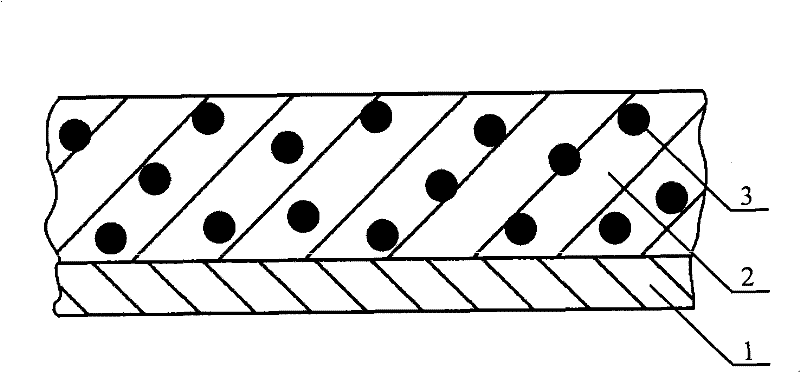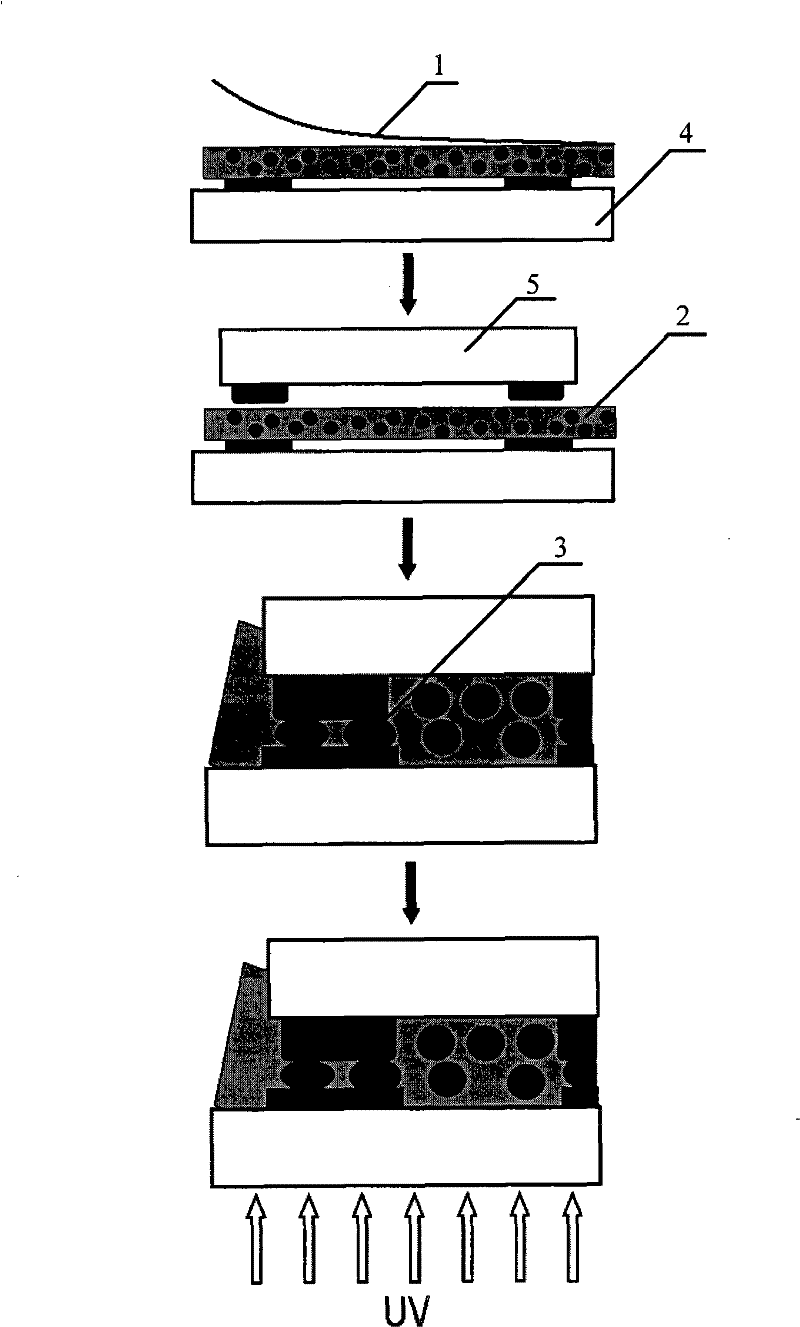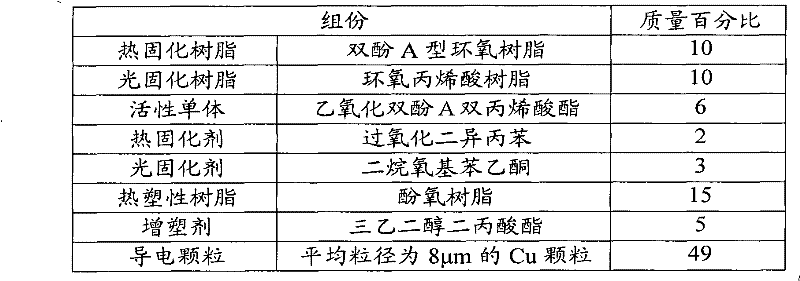Anisotropic conductive adhesive, conductive film, and electrical connection method
An anisotropic, conductive adhesive technology, applied in the field of electrical connection, can solve problems such as inability to apply
- Summary
- Abstract
- Description
- Claims
- Application Information
AI Technical Summary
Problems solved by technology
Method used
Image
Examples
Embodiment 1
[0048] The components contained in the anisotropic conductive adhesive 2 made into the dry film in this embodiment and their respective mass percentages (relative to 100w% dry film conductive adhesive) are shown in Table 1:
[0049] Table 1
[0050]
[0051] The anisotropic conductive adhesive 2 was coated on the PET protective base tape 1 with a thickness of 15 μm to form a dry film, and the thickness of the dry film was 40 μm.
[0052] Use the anisotropic conductive film in the present invention for electrical connection:
[0053] Step 1: Cut a certain length of anisotropic conductive film as required, press it on the electrode terminal of the glass substrate 4 at 40°C, peel off the protective base tape 1, and form anisotropic conductive adhesive 2 on the electrode terminal ;
[0054] Step 2: Precisely align the 5 electrodes of the flexible circuit to be electrically connected with the 4 electrodes of the glass substrate, and then perform pre-pressing;
[0055] Step 3:...
Embodiment 2
[0057] The components contained in the anisotropic conductive adhesive 2 made into the dry film in this embodiment and their respective mass percentages (relative to 100w% dry film conductive adhesive) are shown in Table 2:
[0058] Table 2
[0059]
[0060] The anisotropic conductive adhesive 2 is coated on a 20 μm thick PET protective base tape 1 to form a dry film, and the dry film thickness is 30 μm.
[0061] Use the anisotropic conductive film in the present invention for electrical connection:
[0062] Step 1: Cut a certain length of anisotropic conductive film as required, press it on the electrode terminal of the glass substrate 4 at 50°C, peel off the protective base tape 1, and form anisotropic conductive adhesive 2 on the electrode terminal ;
[0063] Step 2: Precisely align the 5 electrodes of the flexible circuit to be electrically connected with the 4 electrodes of the glass substrate, and then perform pre-pressing;
[0064] Step 3: Carry out pressure on th...
Embodiment 3
[0066] The components contained in the anisotropic conductive adhesive 2 made into the dry film in this embodiment and their respective mass percentages (relative to 100w% dry film conductive adhesive) are shown in Table 3:
[0067] table 3
[0068]
[0069] The anisotropic conductive adhesive 2 is coated on a 25 μm thick PET protective base tape 1 to form a dry film, and the dry film thickness is 45 μm.
[0070] Use the anisotropic conductive film in the present invention for electrical connection:
[0071] Step 1: Cut a certain length of anisotropic conductive film as required, press it on the electrode terminal of the glass substrate 4 at 55°C, peel off the protective base tape 1, and form anisotropic conductive adhesive 2 on the electrode terminal ;
[0072] Step 2: Precisely align the 5 electrodes of the flexible circuit to be electrically connected with the 4 electrodes of the glass substrate, and then perform pre-pressing;
[0073] Step 3: Carry out pressure on th...
PUM
| Property | Measurement | Unit |
|---|---|---|
| particle size | aaaaa | aaaaa |
| particle size | aaaaa | aaaaa |
Abstract
Description
Claims
Application Information
 Login to View More
Login to View More - R&D
- Intellectual Property
- Life Sciences
- Materials
- Tech Scout
- Unparalleled Data Quality
- Higher Quality Content
- 60% Fewer Hallucinations
Browse by: Latest US Patents, China's latest patents, Technical Efficacy Thesaurus, Application Domain, Technology Topic, Popular Technical Reports.
© 2025 PatSnap. All rights reserved.Legal|Privacy policy|Modern Slavery Act Transparency Statement|Sitemap|About US| Contact US: help@patsnap.com



